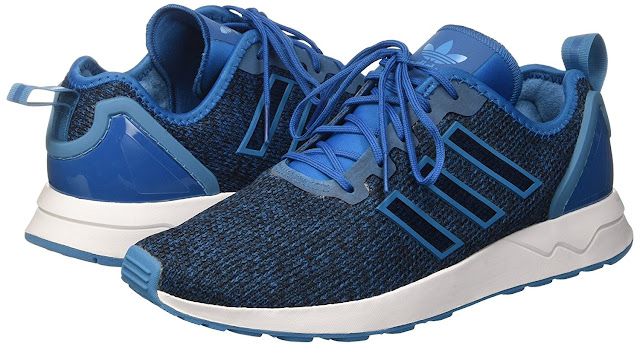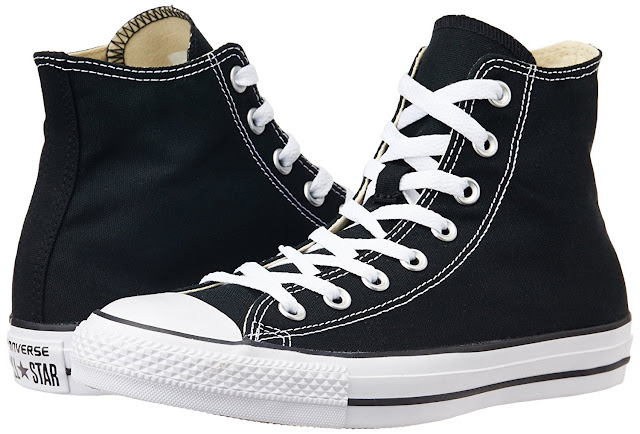Check out this post if you are searching for best running shoe under reasonable price!!!

Fila brings an amazing running shoe for all their followers. This shoe is just awesome and will give a very dashing outlook..Everyone looking to start running has one important question in their mind-which are the best shoes to buy?
r feet and It's definitely not an easy to decide, which is why we're giving you the clearest possible answer to every runners favorite question.
A comfortable running shoe is a shoe that fits, but finding one is not always easy.
Before you start your training regime, you need the right pair of shoes to help you succeed.
As a beginner you would want a protective and durable shoe. Something in the middle range, between super light minimalism to big heavy shoes.
This pair of shoes strikes a good balance between cushioning and stiffness for a supportive shoe design.It has a lace type closure
Reebok is an internationally renowned brand from South Korea
It will never disappoint its followers. This is a new model Xtent from Fila.This pair also Trendy,soft, stylish and comfortable shoe.
About the brand

Fila, Inc. is a South Korean sporting goods company. It is one of the world's largest sportswear manufacturing companies.
Fila was founded in 1911 in Italy, but since a takeover in 2007 by Fila Korea, Fila is now owned and operated from South Korea.
Headed by chairman and CEO Yoon-Soo Yoon, Fila has offices in 11 countries worldwide.
Fila was created in Biella, Italy, by the Fila brothers in 1909. It originally started by making clothing for the people of the Italian Alps, now manufacturing sportswear for men, women, kids and athletes.
The company's primary product was originally underwear, before moving into sportswear in the 1970s, initially with the endorsement of tennis player Björn Borg. The brand got more popular after moving into sportswear.
The original Italian ownership shop Holding di Partecipazioni sold the company to US hedge fund Cerberus Capital Management in 2003, after the company over-committed itself to expensive athletic endorsements, at a time when margins were under pressure.
Cerberus owned Fila through holding company Sports Brands International, which owned and operated all Fila businesses around the world with the exception of Fila Korea, which was a separate company operating the brand under licence.
In January 2007, the global Fila brand and all its international subsidiaries were acquired by Fila Korea from SBI, which made it the largest South Korean sportswear company. Fila Korea currently holds all of the rights to the worldwide use of footwear and clothing brands of the parent firm.
In 2009, ANTA Sports acquired the rights to use the brand in China (the company "Full Prospect"), from Belle International, Fila Korea still owned 15% shares of the joint venture company "Full Prospect.
On May 2011, Fila Korea Ltd. acquired global golf equipment maker Acushnet Company, becoming the new owner of leading golf brands such as Titleist for $1.23 billion.
Fila USA, the fast-growing Italian athletic footwear manufacturer, plans to move its U.S. distribution center from suburban New York City to the Fort Holabird Industrial Park in Southeast Baltimore.
The distribution center, to be housed in a 100,000-square-foot warehouse, will receive footwear made in Italy, Korea, Taiwan, Thailand and
the People's Republic of China, and ship it to retail stores nationwide.Fila plans to open the distribution center in April, according to Elaine A. Baker, the company's regional director of sales.
The newest addition to Hunter Ritter's trophy stand is shaped like a stop sign, made of wood and has a gold medal placed in the middle of it.
The John Carroll senior earned the wrestling hardware in May after winning the FILA Cadet Freestyle National Championships in Akron, Ohio.
Ritter went 5-0 at 85 kilograms - roughly 187 pounds - en route to the title.
While the first-place finish was the culmination of long hours in the practice room, it was merely the beginning of an opportunistic and eventful couple of months - Ritter is set to compete in the FILA Cadet World Championships, which runs from July 15-20 in Slovakia.
Specification
Material Type: Rubber
Lifestyle: Casual
Closure Type: Lace-Up
Warranty Type: Manufacturer
Product warranty against manufacturing defects: 30 days
Care Instructions: Allow your pair of shoes to air and de-odorize at a regular basis, this also helps them retain their natural shape; use shoe bags to prevent any stains or mildew; dust any dry dirt from the surface using a clean cloth, do not use polish or shiner
Pros:
Cons:

Fila brings an amazing running shoe for all their followers. This shoe is just awesome and will give a very dashing outlook..Everyone looking to start running has one important question in their mind-which are the best shoes to buy?
r feet and It's definitely not an easy to decide, which is why we're giving you the clearest possible answer to every runners favorite question.
A comfortable running shoe is a shoe that fits, but finding one is not always easy.
Before you start your training regime, you need the right pair of shoes to help you succeed.
As a beginner you would want a protective and durable shoe. Something in the middle range, between super light minimalism to big heavy shoes.
This pair of shoes strikes a good balance between cushioning and stiffness for a supportive shoe design.It has a lace type closure
Reebok is an internationally renowned brand from South Korea
It will never disappoint its followers. This is a new model Xtent from Fila.This pair also Trendy,soft, stylish and comfortable shoe.
About the brand

Fila, Inc. is a South Korean sporting goods company. It is one of the world's largest sportswear manufacturing companies.
Fila was founded in 1911 in Italy, but since a takeover in 2007 by Fila Korea, Fila is now owned and operated from South Korea.
Headed by chairman and CEO Yoon-Soo Yoon, Fila has offices in 11 countries worldwide.
Fila was created in Biella, Italy, by the Fila brothers in 1909. It originally started by making clothing for the people of the Italian Alps, now manufacturing sportswear for men, women, kids and athletes.
The company's primary product was originally underwear, before moving into sportswear in the 1970s, initially with the endorsement of tennis player Björn Borg. The brand got more popular after moving into sportswear.
The original Italian ownership shop Holding di Partecipazioni sold the company to US hedge fund Cerberus Capital Management in 2003, after the company over-committed itself to expensive athletic endorsements, at a time when margins were under pressure.
Cerberus owned Fila through holding company Sports Brands International, which owned and operated all Fila businesses around the world with the exception of Fila Korea, which was a separate company operating the brand under licence.
In January 2007, the global Fila brand and all its international subsidiaries were acquired by Fila Korea from SBI, which made it the largest South Korean sportswear company. Fila Korea currently holds all of the rights to the worldwide use of footwear and clothing brands of the parent firm.
In 2009, ANTA Sports acquired the rights to use the brand in China (the company "Full Prospect"), from Belle International, Fila Korea still owned 15% shares of the joint venture company "Full Prospect.
On May 2011, Fila Korea Ltd. acquired global golf equipment maker Acushnet Company, becoming the new owner of leading golf brands such as Titleist for $1.23 billion.
Fila USA, the fast-growing Italian athletic footwear manufacturer, plans to move its U.S. distribution center from suburban New York City to the Fort Holabird Industrial Park in Southeast Baltimore.
The distribution center, to be housed in a 100,000-square-foot warehouse, will receive footwear made in Italy, Korea, Taiwan, Thailand and
the People's Republic of China, and ship it to retail stores nationwide.Fila plans to open the distribution center in April, according to Elaine A. Baker, the company's regional director of sales.
The newest addition to Hunter Ritter's trophy stand is shaped like a stop sign, made of wood and has a gold medal placed in the middle of it.
The John Carroll senior earned the wrestling hardware in May after winning the FILA Cadet Freestyle National Championships in Akron, Ohio.
Ritter went 5-0 at 85 kilograms - roughly 187 pounds - en route to the title.
While the first-place finish was the culmination of long hours in the practice room, it was merely the beginning of an opportunistic and eventful couple of months - Ritter is set to compete in the FILA Cadet World Championships, which runs from July 15-20 in Slovakia.
Specification
Material Type: Rubber
Lifestyle: Casual
Closure Type: Lace-Up
Warranty Type: Manufacturer
Product warranty against manufacturing defects: 30 days
Care Instructions: Allow your pair of shoes to air and de-odorize at a regular basis, this also helps them retain their natural shape; use shoe bags to prevent any stains or mildew; dust any dry dirt from the surface using a clean cloth, do not use polish or shiner
Pros:
- Trendy Look
- Stylish
- Comfortable & Durable
- Complete Washable
- Optimal Flexibility
- warranty for 1 month
Cons:
- Little costly
- Very light
- Color may vary due to Photographic Effect
- not meant for playing heavy game
- have to de-odorize at regular basis
Click the button below to buy:










